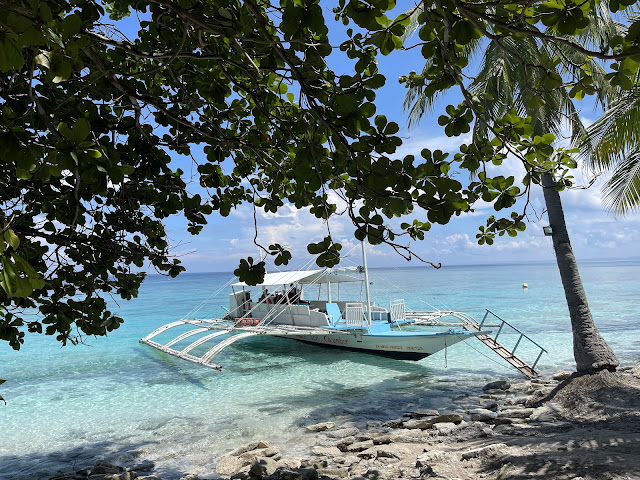June marks a milestone month for Landers Superstore as it celebrates another incredible year of growth, excellence, and member love. Now in its 9th year, the country’s fastest-growing membership shopping destination is going the extra mile to thank both loyal and new members with an anniversary celebration they won’t forget.
Inspired by its new brand campaign, “Lots to Love,” this year’s festivities promise lots of reasons to be joyful and thrilled to shop your heart out. There’ll be even more jaw-dropping deals, life-changing prizes, exclusive discounts, and new perks that show just how much Landers values its thriving community of 2 million members and counting.
Super Crazy Sale Returns Bigger and Better Than Ever!
Leading the anniversary surprises this month is the return of Landers Super Crazy Sale on June 11 to 15, 2025. While previous years have been special in their own way, the 9th anniversary Super Crazy Sale sets itself apart with the BIGGEST selection of 50% OFF and Buy 1 Get 1 deals on premium finds across all categories, both in-store and at www.landers.ph.
Making it even more remarkable is the iconic Piso Sale which will feature a fresh line-up of the store’s best-sellers for just P1 each. With a minimum purchase of P1,000, members can snag up to 2 Piso Sale items per day – a deal that’s too good to miss.
June 11 (Wednesday): Pepsi 1.5L and/or Mountain Dew 1.5L
June 12 (Thursday): Oral B Complete Mouthwash 250mL
June 13 (Friday): KitKat 2 Finger Original Chocolate 5x20.7g
June 14 (Saturday): Rise Buddy Rice Snacks (Parmesan & Herbs, Seaweed, BBQ, Sour Cream) 60g
June 15 (Sunday): Nissin Cup Noodles (Chicken and Shrimp) 2.5z
With more unbeatable offers, more exciting choices, and more surprises, the 9th Anniversary Super Crazy Sale promises an unforgettable shopping experience filled with great finds, massive savings, and lots to love.
Landers Central and Doppio Serves Lots of Flavors and Lots to Love
The celebration doesn’t stop in the aisles. Landers Central and Doppio will join the 9th Anniversary party with mouthwatering deals guaranteed to bring bold flavors and big savings to the table.
From June 11 to 15, members can treat themselves – and their Super Crazy Sale shopping buddies – to the best-selling items on the menu at irresistible prices:
P99 ONLY for a slice of NY Cheese Deluxe Pizza
Buy 2 for P299: Choose between the US Angus Beef Burger or the US Beef Jalapeño & Cheese Hotdog
Save P99 Set Meals:
Set A: US Beef Jalapeño & Cheese Hotdog, Creamy Truffle Pasta, and Soda Cup – P350 ONLY
Set B: US Angus Beef Burger, Creamy Truffle Pasta, and Soda Cup – P305 ONLY
50% OFF on Doppio Iced Coffee (any flavor)
For larger groups or next-level cravings, Landers Central’s P999 Bundle Deals are perfect for sharing. Available from June 11 to 30, these hearty bundles come in two satisfying options:
Bundle A: 18” NY Cheese Deluxe Pizza, 2 Creamy Truffle Pastas, 2 Fries, and a 1.5L Coke
Bundle B: 8-piece Chicken Bucket, 6 Rice, 2 Fries, and a 1.5L Coke
The flavor fest doesn’t end there. From June 16 to 29, members will get to enjoy more anniversary-exclusive bites:
50% OFF on Landers Central’s Hawaiian Truffle and Jamon Pizza
P99 ONLY for Doppio Ice Cream Cup (regular price P118)
The Piso Sale fever also carries over to our dining hall with these special one-day-only offers:
JUNE 20 – Landers Central Fries (minimum purchase of P600 at Landers Central)
JUNE 27 – Doppio Ice Cream (with a minimum purchase of P300 at Doppio)
With crowd-favorite food deals served all month long, Landers Central and Doppio is turning the 9th Anniversary into a full-on feast – making every visit a celebration of savings, flavor, and fun.
Get a chance to be a Landers Millionaire
As if huge discounts, Piso steals, and flavorful selection aren’t enough, Landers Super Crazy Sale also gives members the best chance to boost their raffle entries for Landers’ biggest raffle of the year – the Landers Millionaire Promo.
Still a part of its 9th Anniversary celebration, this exclusive promo will award P1,000,000 worth of Landers shopping sprees to one lucky member every month. But that’s not all – three additional winners each month will also take home P100,000 worth of Landers gift certificates as minor prizes.
To earn raffle entries, members simply need to make a minimum accumulated spend of P4,000 in-store or online at www.landers.ph. And with the Super Crazy Sale in full swing, packed with irresistible deals across all categories, hitting the minimum spend – and earning a shot at becoming a Landers Millionaire – has never been easier.
Enjoy 50% Off on Membership Sign-Ups and Renewal
Landers Super Crazy Sale, as well as all 9th Anniversary activities, are reserved for Landers members only. If you’re not a member yet, or haven’t renewed your expired membership, you can take advantage of a special 50% OFF membership rate until June 30. Instead of P700, you will only have to pay P350 to get access to the sale and perks like free haircut, low-priced medicine, and discounted fuel.
Sign up or renew now to catch up on our anniversary festivities and unlock a world of topnotch quality products, low prices, and unforgettable experiences
Join the celebration today!
Landers’ 9th Anniversary is a celebration of everything members have come to love — from incredible deals that give more value to every peso to special activities crafted just for this occasion. It’s Landers’ heartfelt way of spreading delight and thanking everyone who has been a part of its journey over the past nine years.
Don’t miss your chance to experience the joyful kind of craziness that only Landers Super Crazy Sale can bring. Mark your calendars and get ready for a full month of anniversary excitement – with lots to shop, lots to save, lots to enjoy, and always, lots to love.























































.jpg)








.jpg)

Follow Us